THE PAINTER

Alla mostra di pittura - Acrilico su tela

Fishing is easy - Acrilico su tela

Passeggiando in città - Acrilico su tela
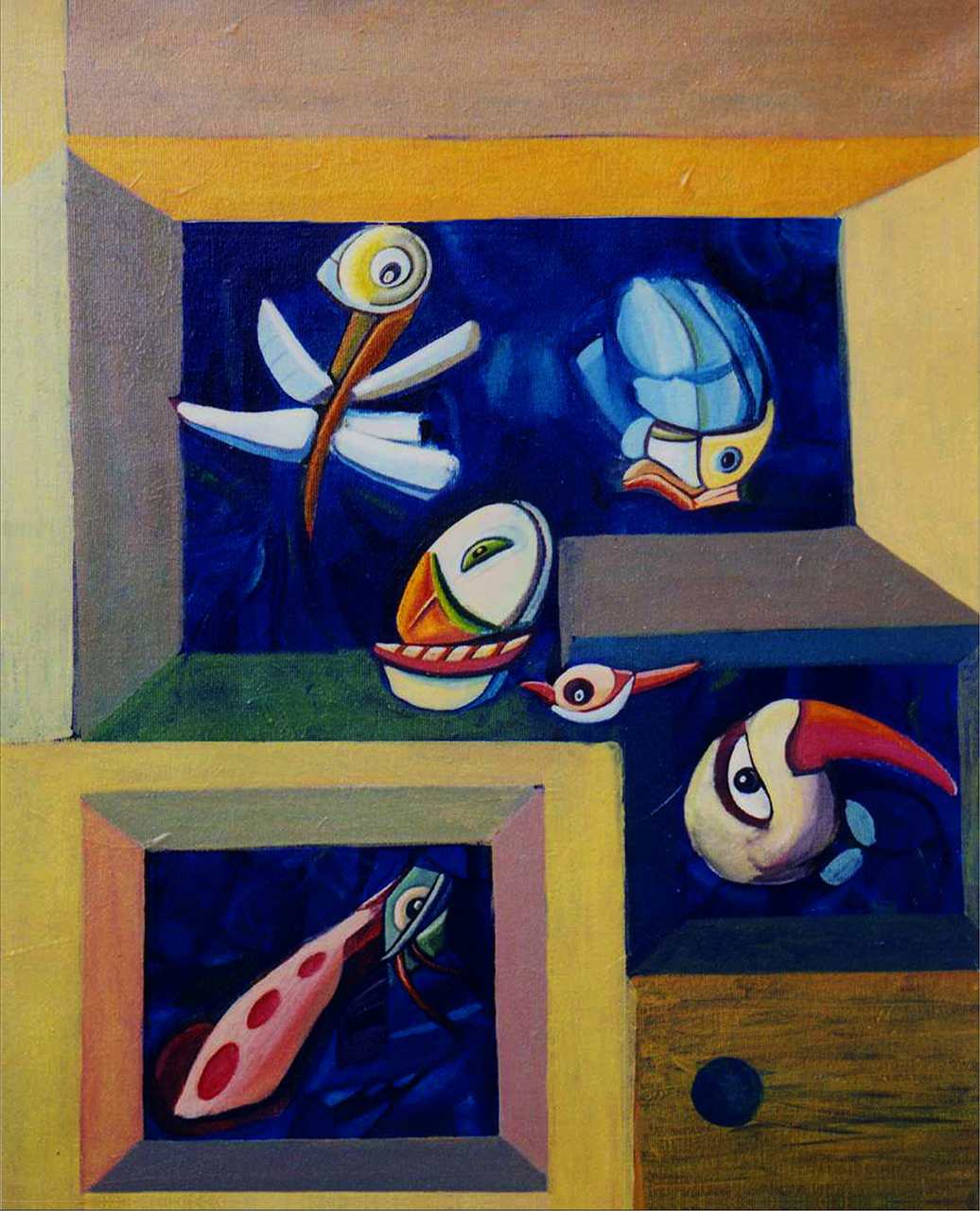
Greminlins - Acrilico su tela
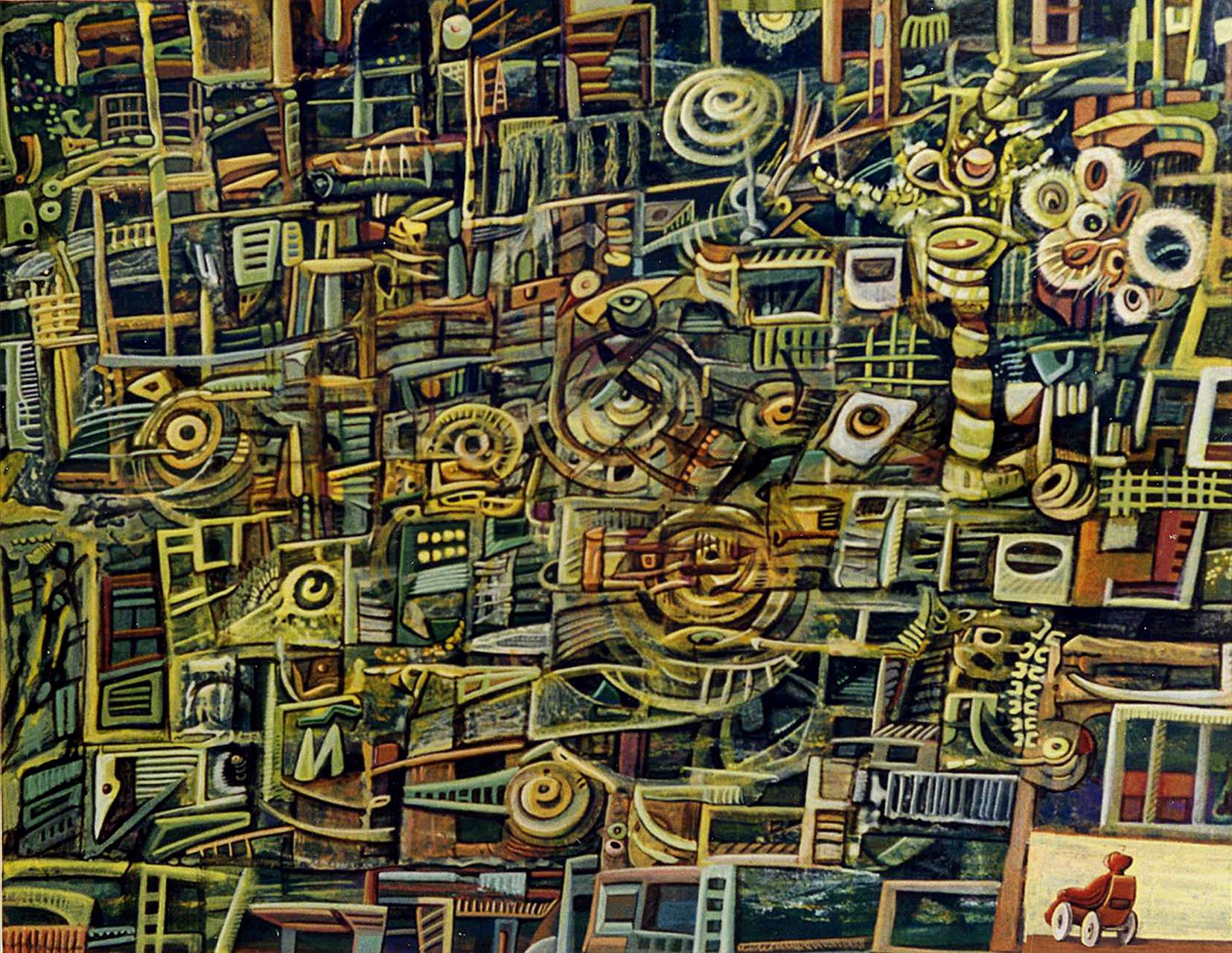
Contemplando il caos interiore - Acrilico su tela
-
Raul’s paintings are an explosion of colours, a thousand-eyed tangle of marks, a challenge to shape and the physical limits of his canvases.
Above all, his entire work – artistic, poetic, musical, graphic and pictorial, speaks of Raul’s happiness in sharing. Of how he deemed necessary exchanging ideas and points of views, listening to constructive criticism from those he cared about, to make the hard loneliness of artistic creation less cumbersome.
In June 2000, with the patronage of the Italo-Hellenic associtaion “Ionica”, at the INSTITUTE OF FRENCH CULTURE CORFU, together with his Greek friend T. Z., Raul’s paintings were displayed in the exhibition “Ma che razza di fazza”. The following critical excerpts, by Maurizio Meschia an Eduardo Fiorillo, are taken from the introduction to the catalogue edited by the graphic designer Simona Sarchi.
Raul Scacchi is a miniaturized of chaos. In these times of minimalist painting, he exasperates the detail with the monastic patience of a Benediction scribe, anihilates it, then multiplies it in obsessive seriality. All this he does with a good dose of healty irony.
The decidedly surrealistic origin of his work, recaptures, through the filter of his vision, a wholly original interpretation. In an uge for philatelic order, the magma of the composition (fragments of cities, futuristic or extinct, bestiaries, fantastic but not too much so, the flotsam and jetsam of uninhabited existence, etc.) is restated with oriental tranquillity, in a harmony of tone and a formal balance, which are absolutely rigorous.
Incredible as it seems, one appears to find, in this eccentric and self-taught artist, a foundation culled, at once, both from the old and contemporary masters, especially in the technique, the patience of the composition and control of the materials.Maurizio Meschia
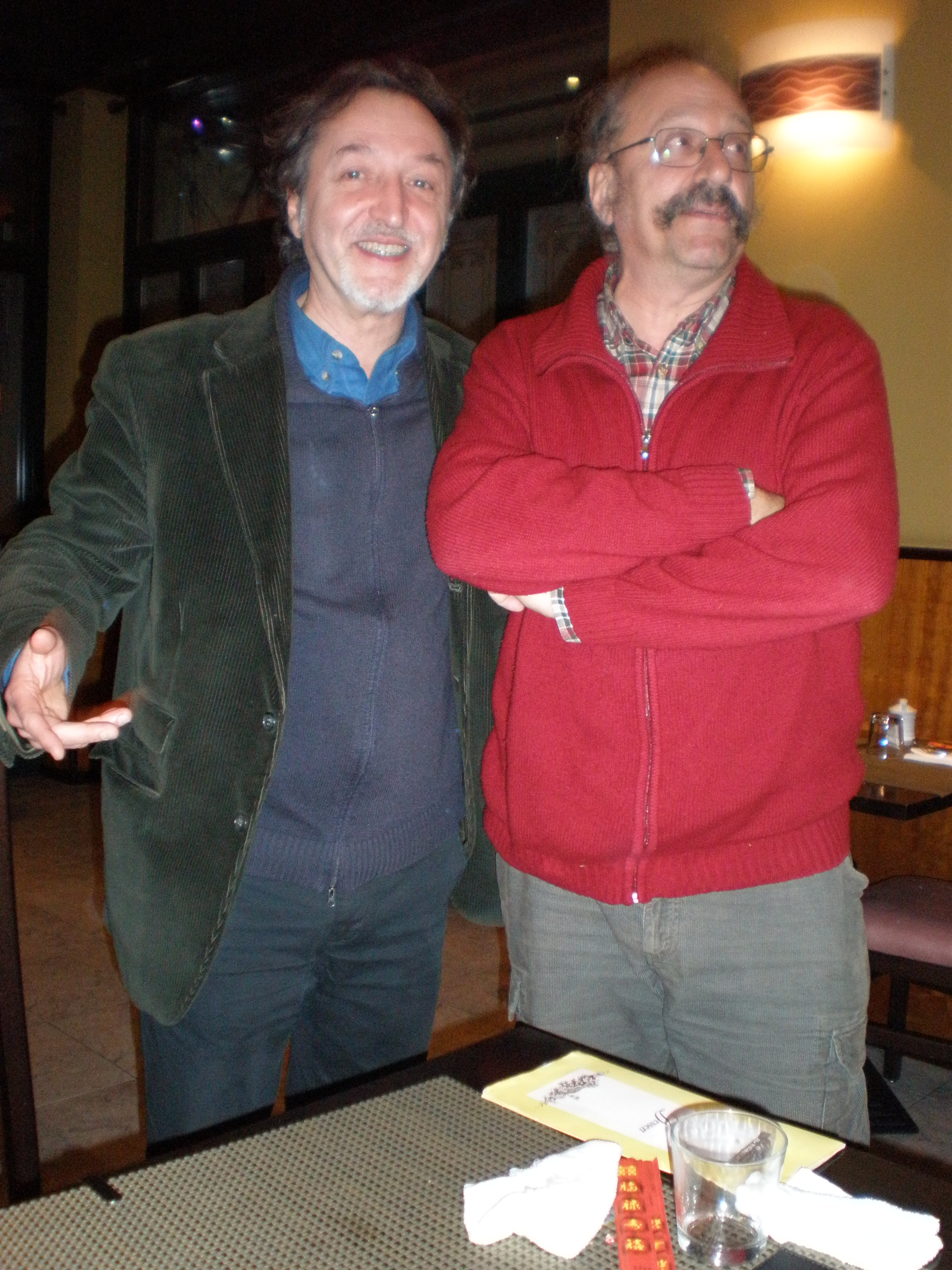

Sul fondo del mare - Acrilico su tela

Il riposo del guerriero - Acrilico su tela

Condominio - Acrilico su tela

La guerra - Acrilico su tela

Senza titolo - Acrilico su tela
-
"... On the other hand, there’s someone who, living in an international setting, a city full of culture and possibilities like Milan, decided to run off to Corfu, notwithstanding his seasickness, airsickness and above all sickness of nonsense.
So tell us, Mr. Raul... with such a name! You, moving around with indifference, throwing a glance to the paintings now and then. These paintings are your work, aren’t they? So what are you looking at?
Could you tell us what do you mean by… I’ve left something in them… That is, I was looking for something at the heart of… I mean, at the end of… but there’s never an end.
I got it, you’re talking about the soul. What you’re trying to say is that at the end of your labyrinthine paintings, you’re looking for the soul. Your soul, or the soul of the world, which after all is just the same: that is what art is made for, isn’t that? And it’s at the heart of your soul that you’ve dug the shapes and colours, and now we can all see them. Because you’re a true artist after all, mocking yourself is pointless when you’re painting with your soul…"Eduardo Fiorillo
(comment from the catalog from the exhibition of 2000 in Corfù, "Ma che razza di Fazza")
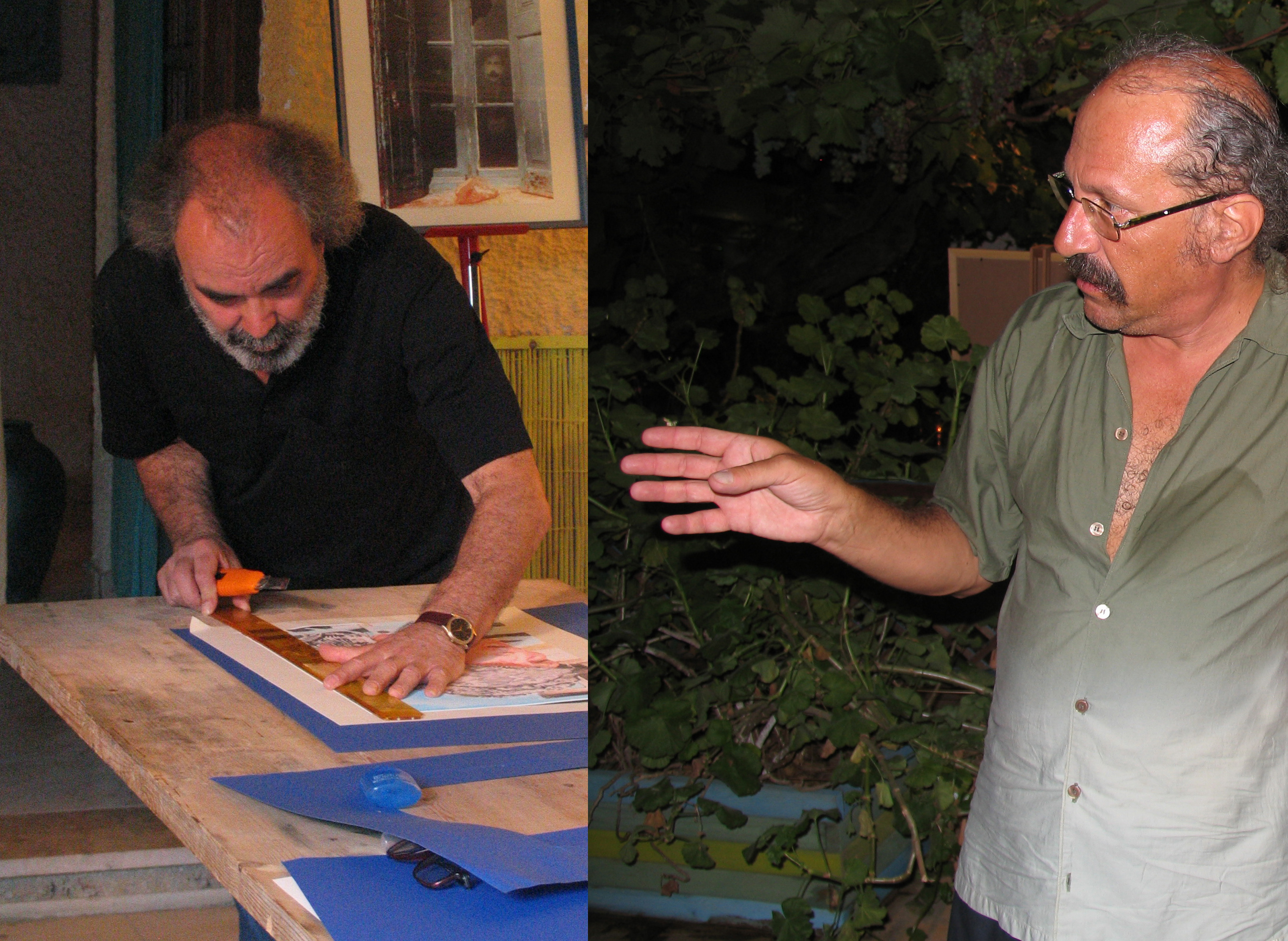

Il messaggio della testa di cavallo - Tecnica mista

Senza titolo - Tecnica mista

Senza titolo - Tecnica mista

Senza titolo - Tecnica mista
-
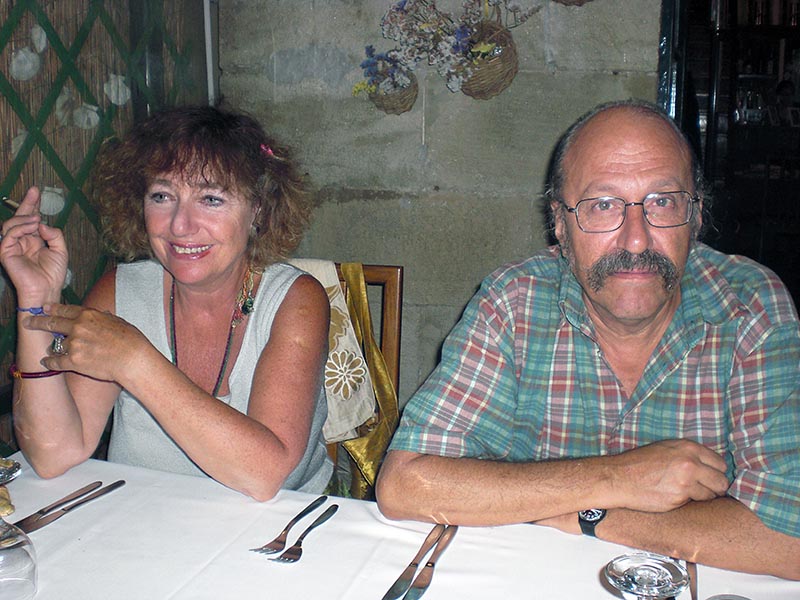
Gioia e Raul
In October 2003 Raul’s works were put on display in the foyer of the Civic Gallery of Corfu, the ART CAFÉ, a building overlooking on the beautiful garden of Palazzo Reale, which was built on a sheer rock known as “to kipo tou laou” (meaning “the garden of the people”). The Civic Gallery is in the heart of the city, near the old fortress built by the Venetians. The event raised great interest and the exhibition, that showcased works of Theotokis Zervos and the Italian photographer and graphic Simona Sarchi, was visited by a great number of visitors.
On that occasion, Raul presented some works marked by the progress of his artistic research, exploring possible contaminations between Art and Technique (the exhibition was called ‘Thekni e Thekniki’).
After processing parts of his previous works with a computer, Raul magnified specific details, printed them on a special canvas and worked on them using coloured pencils, crayons, markers and paint brushes; a mix of tools with which he was able to create new shapes and chromatic effects.
The following excerpts have been taken respectively from the introduction to the exhibition and the critical presentation of Raul’s works.
THEKNI e THEKINKI', Art and Technique – details and transformations
In the introduction to his most famous essay on art written in 1936, The Work of Art in the Age of Mechanical Reproduction, Walter Benjamin wondered about which role would have been left to Art in a time where technical progress easily allowed for endless reproduction and multiplication of works of art. The new perspectives opened by cinema and photography were supported by many, among whom the poet Paul Valery, quoted by Benjamin, who expressed his opinions on this matter in 1936. "... In all the arts there is a physical component which can no longer be considered or treated as it used to be, which cannot remain unaffected by our modern knowledge and power". -
"... We must expect great innovations – Valery goes on analysing the progress of research in the field of images during the last twenty years – to transform the entire technique of the arts, thereby affecting artistic invention itself and perhaps even bringing about an amazing change in our very notion of art..."
However, such a faithful optimism wasn’t shared by Benjamin, who unlike Valery wrote in the aforementioned work "... Even the most perfect reproduction of a work of art is lacking in one element: its presence in time and space, its unique existence at the place where it happens to be... The presence of the original is the prerequisite to the concept of authenticity".
Whether the use of machines in the artistic field is beneficial for men or a permanent damage to their artistic potential is an old debate exciting and involving not only the artists themselves, but also critics, art dealers and simple connoisseurs.
The elusive smile of Marylin Monroe, provocatively cloned by Andy Wharol and used in the same canvas, speaks of a complete surrender of "Texnh" to "Texnikh", while forty years later, at the inception of the new millennium, Laurie Anderson’s experimental performances set against lunar and dreamy landscapes express her belief that in virtual machines lie the same heart of the “sympathetic anthropos”, able to soothe loneliness and pain (such as those suffered by jailmen, old men, children living at the other end of the world or terminally ill).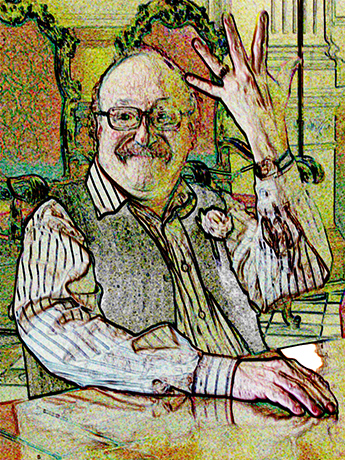
Quanto agli artisti che oggi espongono all'ART CAFE', è indubbio che con accenti, mezzi e stili comunicativi diversi, si collocano tutti e tre nel solco della tradizione che ha al centro la dialettica tra Theknì e Thelnikì, "Arte dell'artista" e ruolo delle macchine. R. Scacchi propone un "onorevole compromesso": mentre onora la memoria di una mano sapiente, blandisce le potenzialità della macchina chiedendole di riprodurre dei multipli che, a prodotto finito, grazie all'ulteriore intervento della fisicità artigiana, multipli non sono più.
Al di là della scelta di continuare ad attingere ai paesaggi interiori, è evidente l'intento di raccogliere e rilanciare la sfida sulla nozione di autenticità promossa da Benjamin.
Gioia Maestro
-
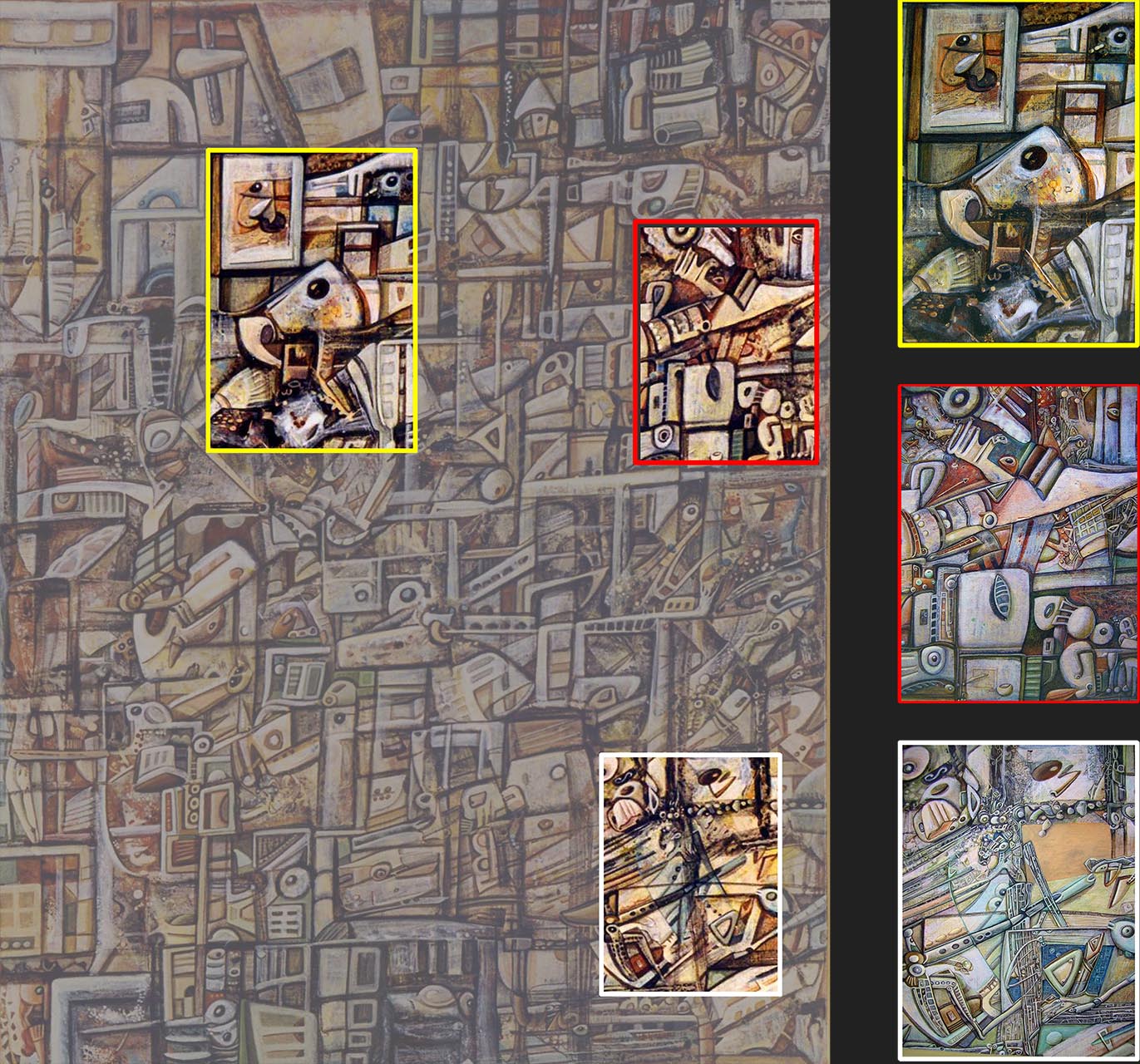
Qui accanto esplifichiamo con le immagini ciò che abbiamo cercato di descrivere con le parole, sul lavoro di Raul per lamostra del 2003.
Accanto al quadro madre, in questo caso l'acrilico su tela "Condominio", ci sono tre opere geminate da altrettanti particolari che danno vita alle nuove produzioni.
Rispetto all'originale di partenza, a lavoro finito queste vivono in modo del tutto autonomo. 
Crocefissione - Olio su tavola

Gruppo con Madonna - Olio su tavola

Rock band - Olio su tavola

Senza titolo - Acrilico su tela

Kathreftis (Specchio) - Acrilico su tela

Metafisica lunare - Acrilico su tela

Ahia - Acrilico su tela
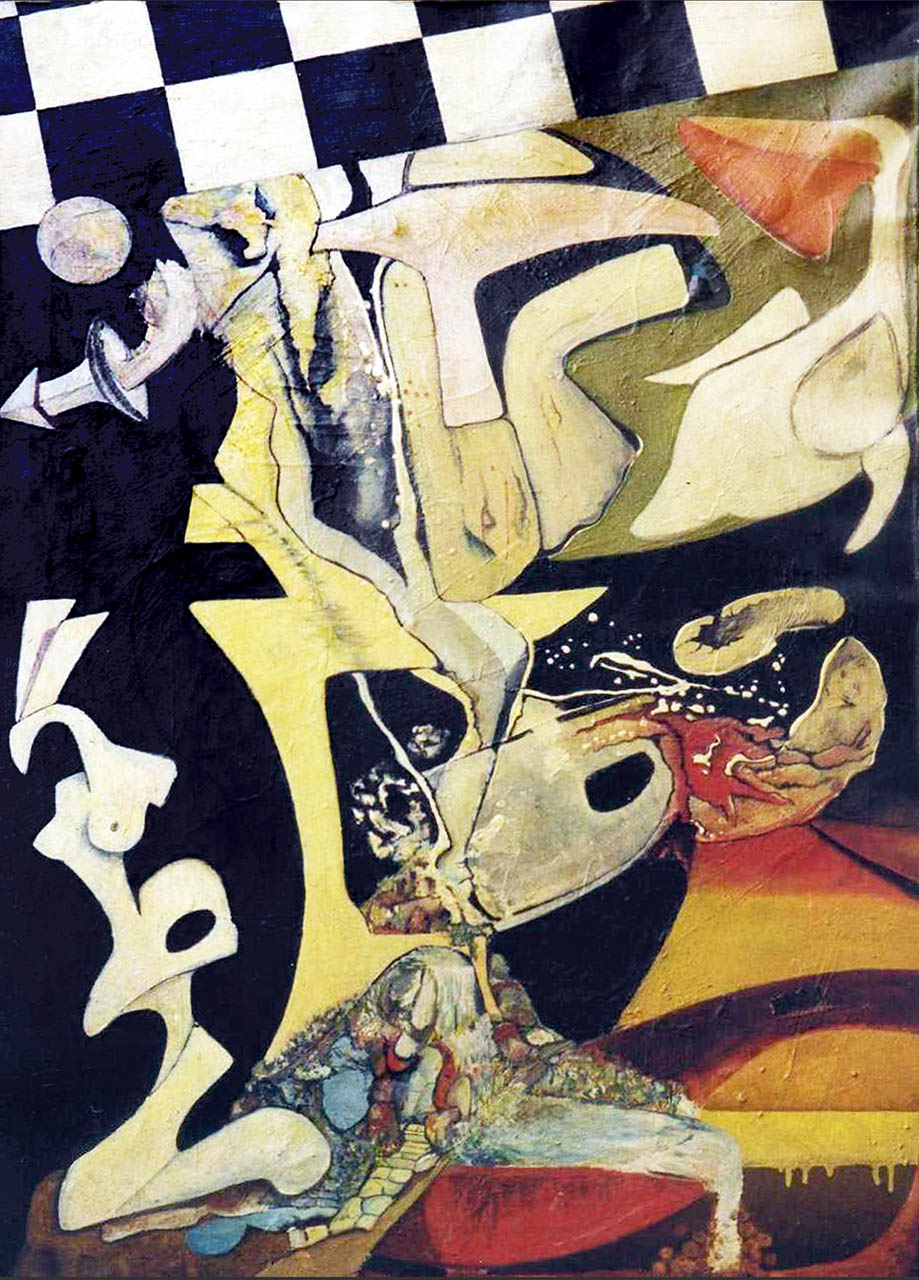
La papera di Escher - Olio su tela

Melzo 12 - Olio su tavola
In his second exhibition, Raul Scacchi moves to a new phase of his stylistic research. From his earlier production as a surrealist yet ironic painter dealing with urban and inner decay, a “Miner of Chaos”, the author attains a new system of meanings less idiosyncratic and closer to the minds of those looking at his works.
Beside the dark, claustrophobic tangle of small and bizarre objects, partly living and partly inanimated (such as an eye looking from the twisted outline of a rusty box), a new, plainer painting style takes form, made of simpler shapes (an old house, the shop of a second-hand dealer). A sad and moving feeling can be grasped from these fragments of a more organised world, capable of a deeper communication with the intersubjective universe of the other.
The anguish and the inner chaos reified in the external reality coexist now with the external reality itself, distorted and/or transformed by the drives of the inner world. However, Raul Scacchi’s painting is still primarily characterised by a strong, original and balanced style, and by a deep mastering of the pictorial technique.
This “self-taught, upset author” can now rightly start feeling less craftsman and more painter.
Sandra Maestro